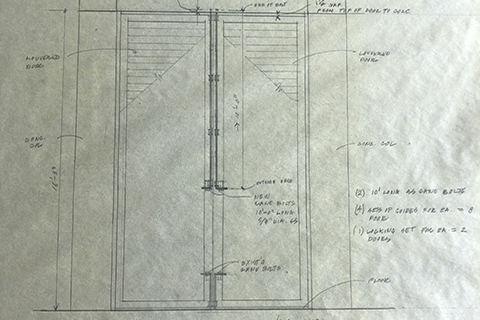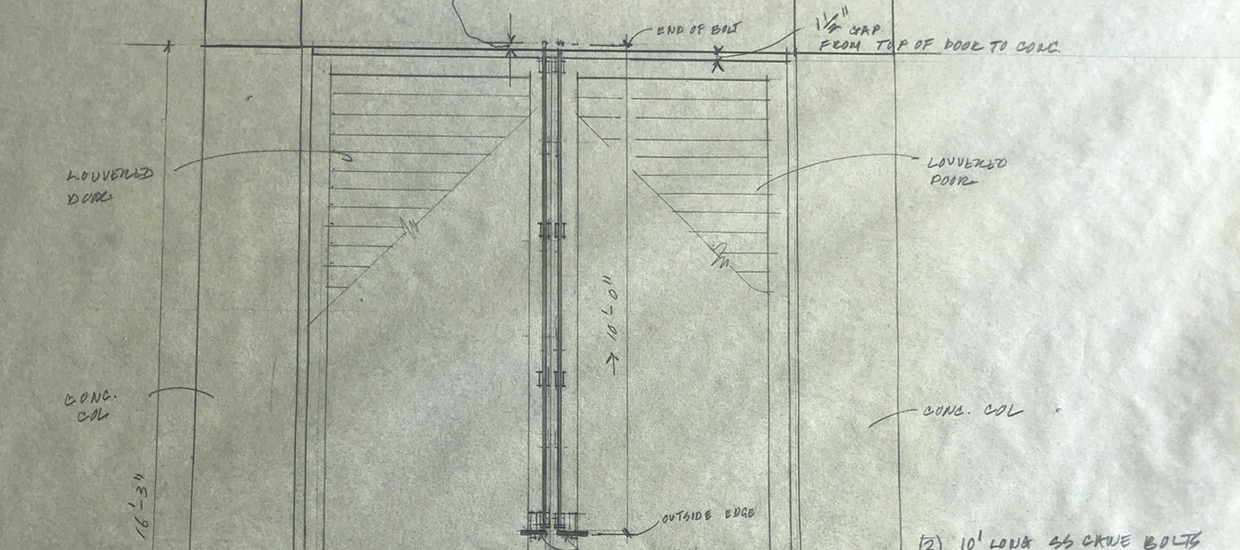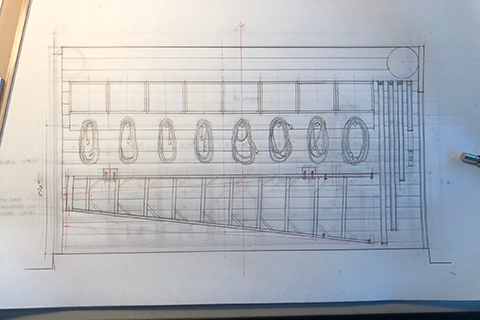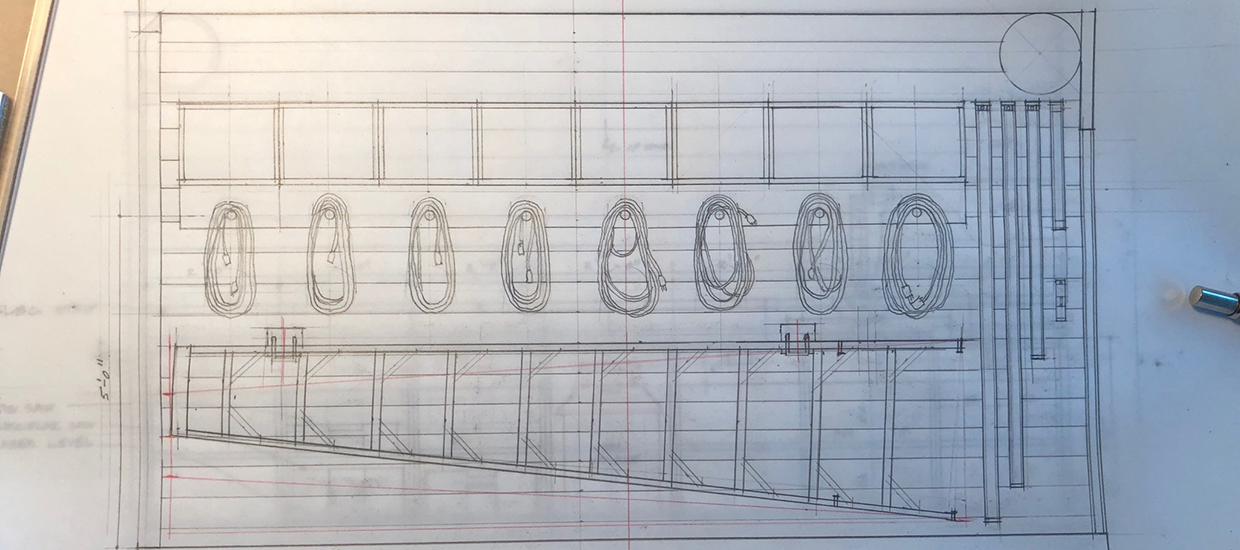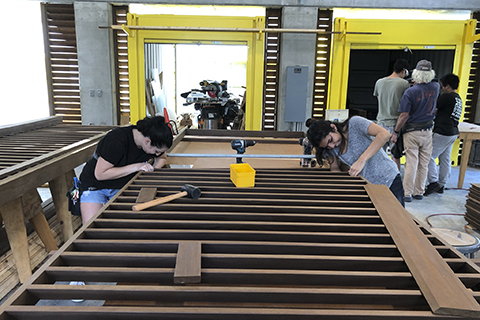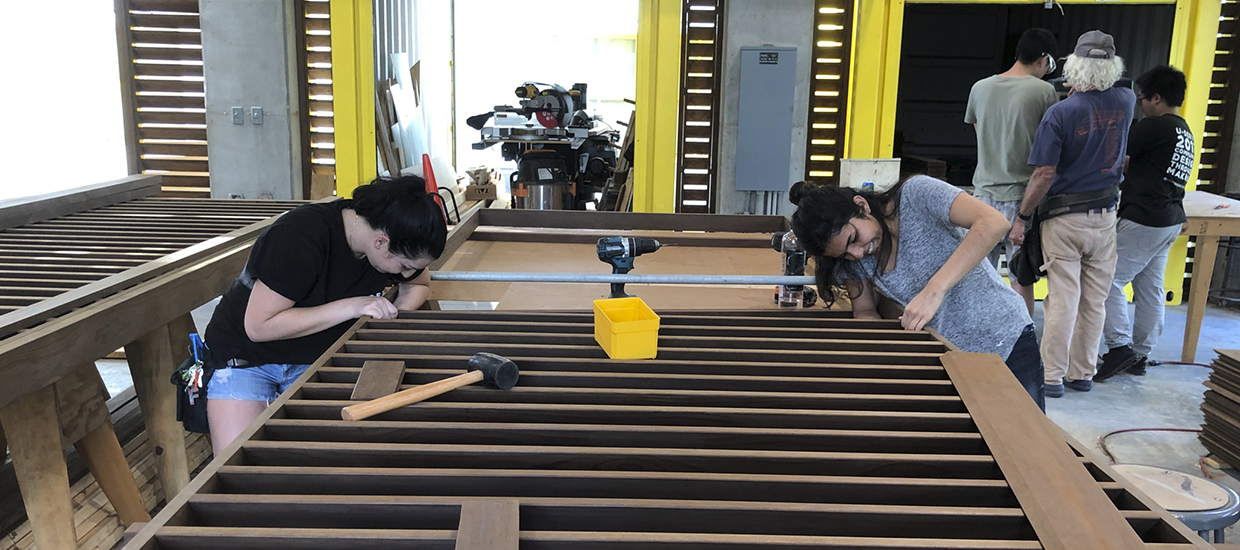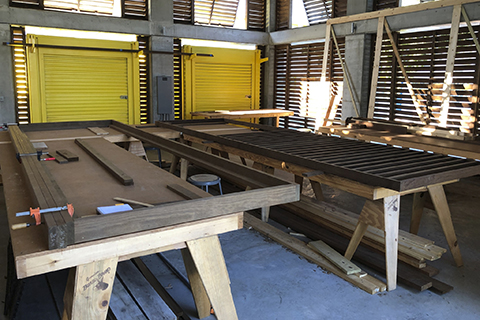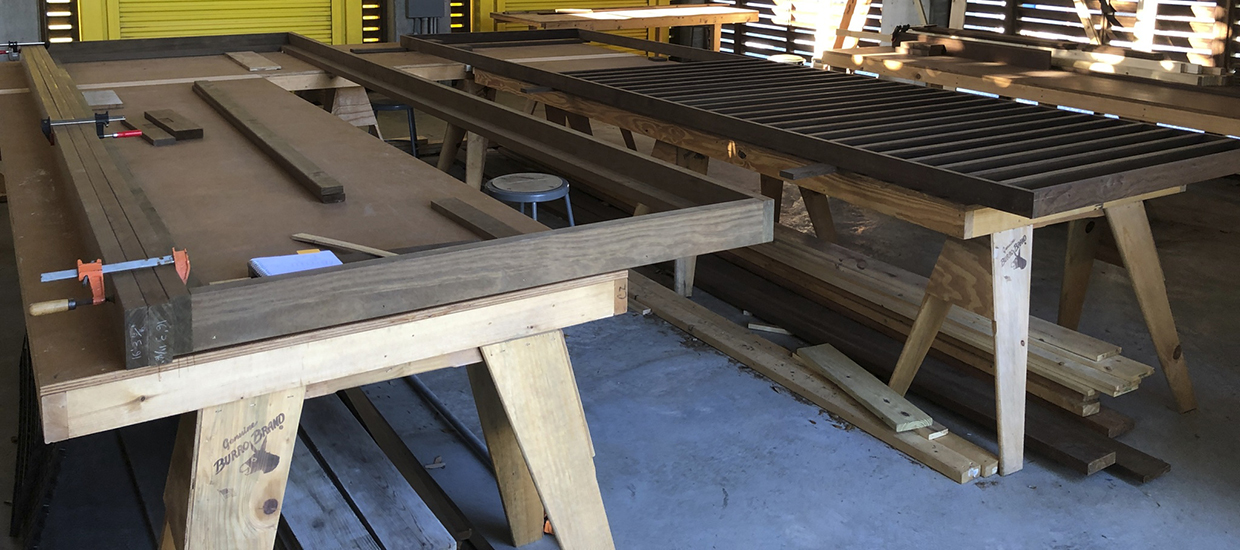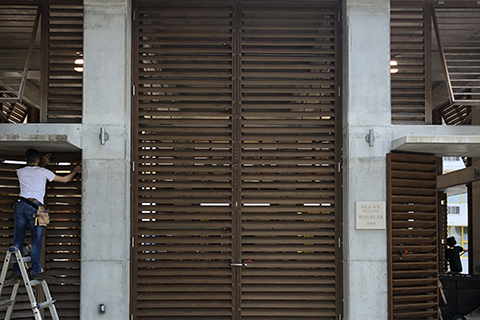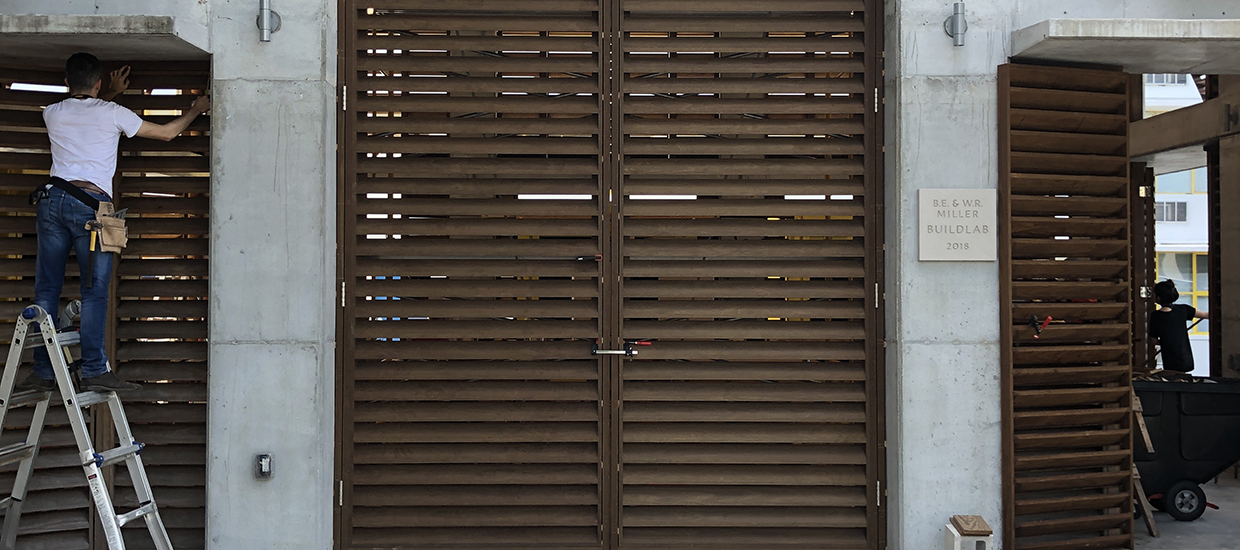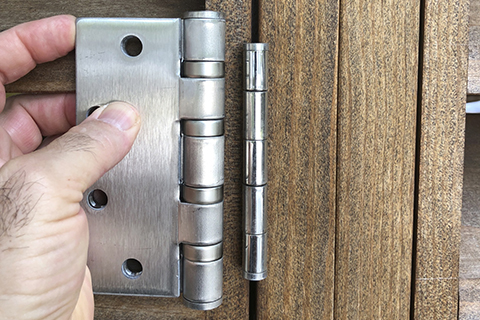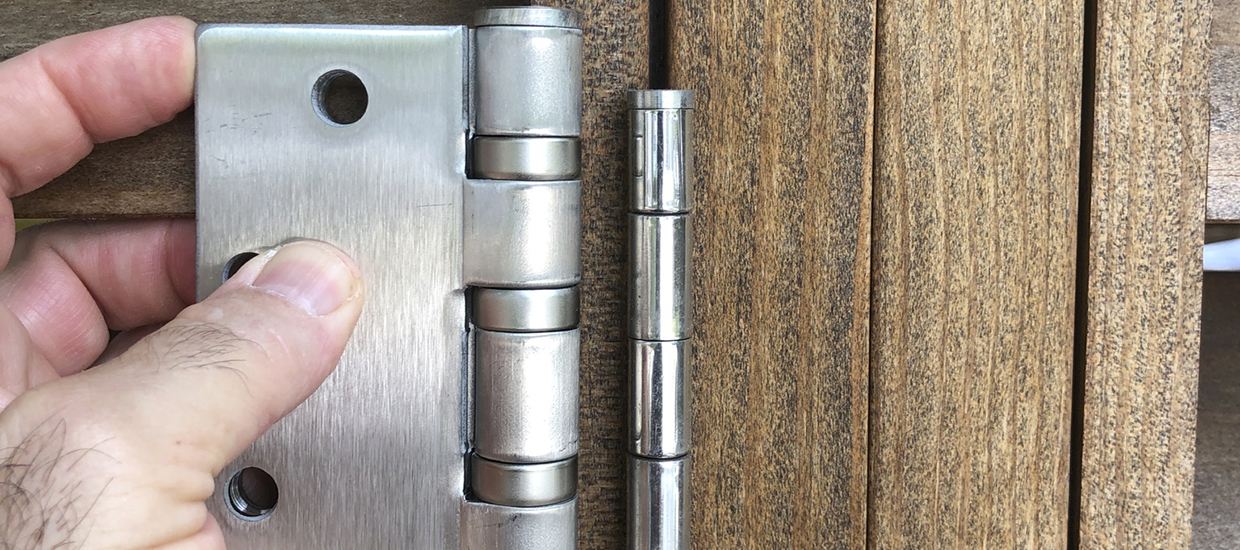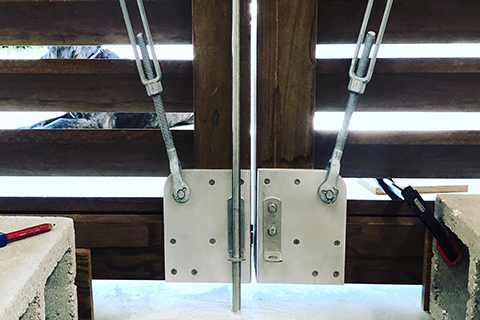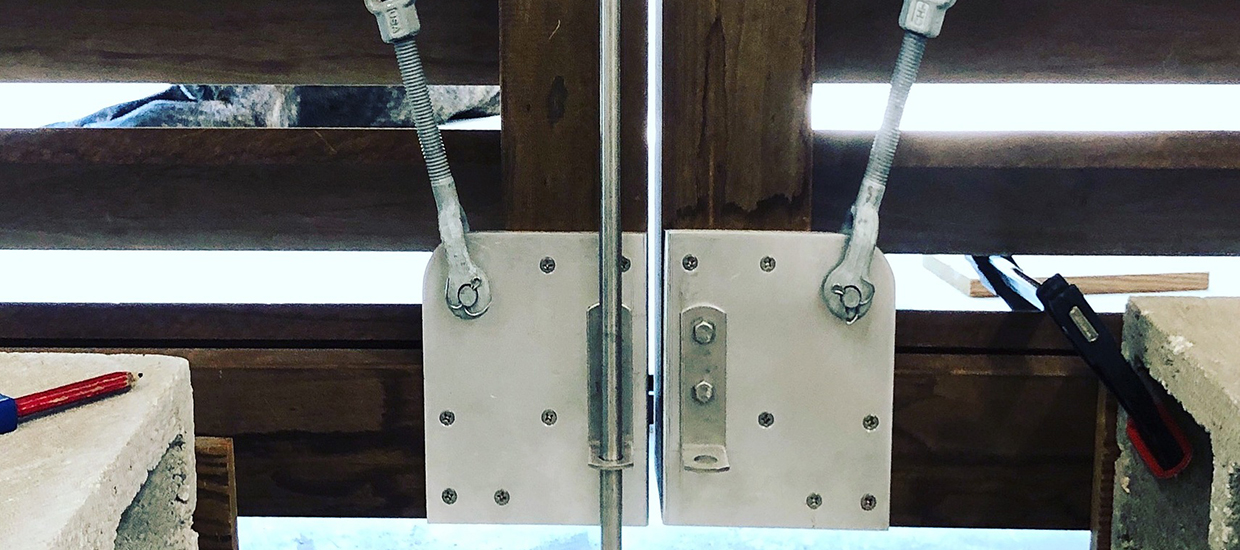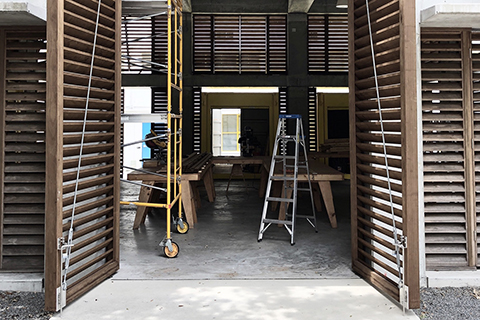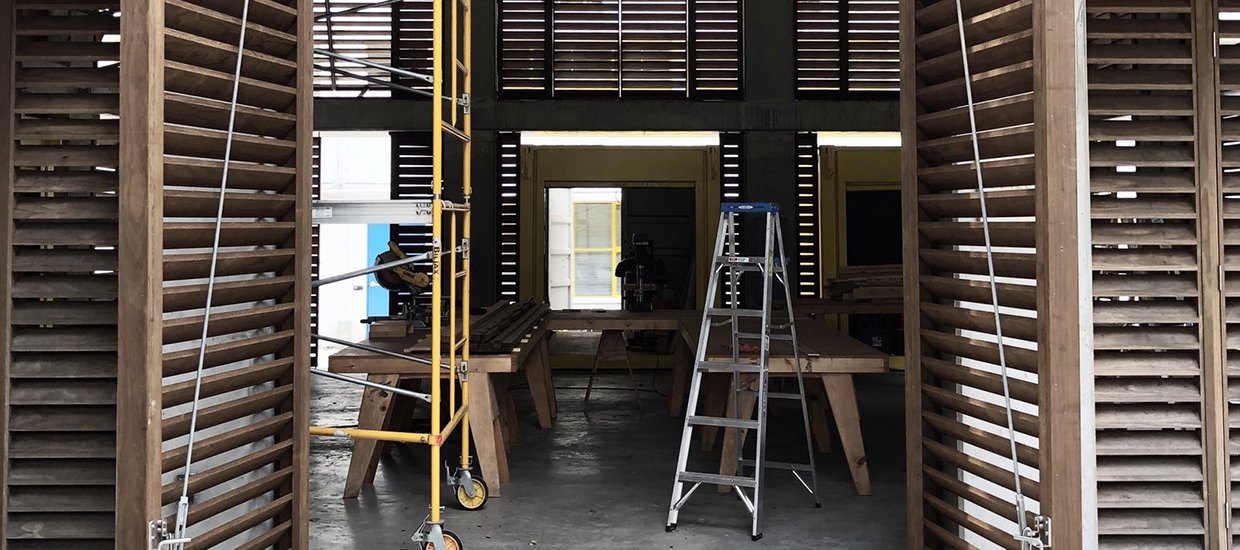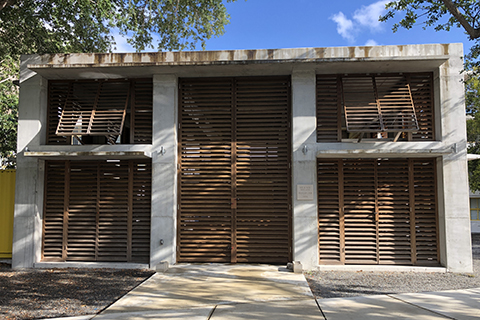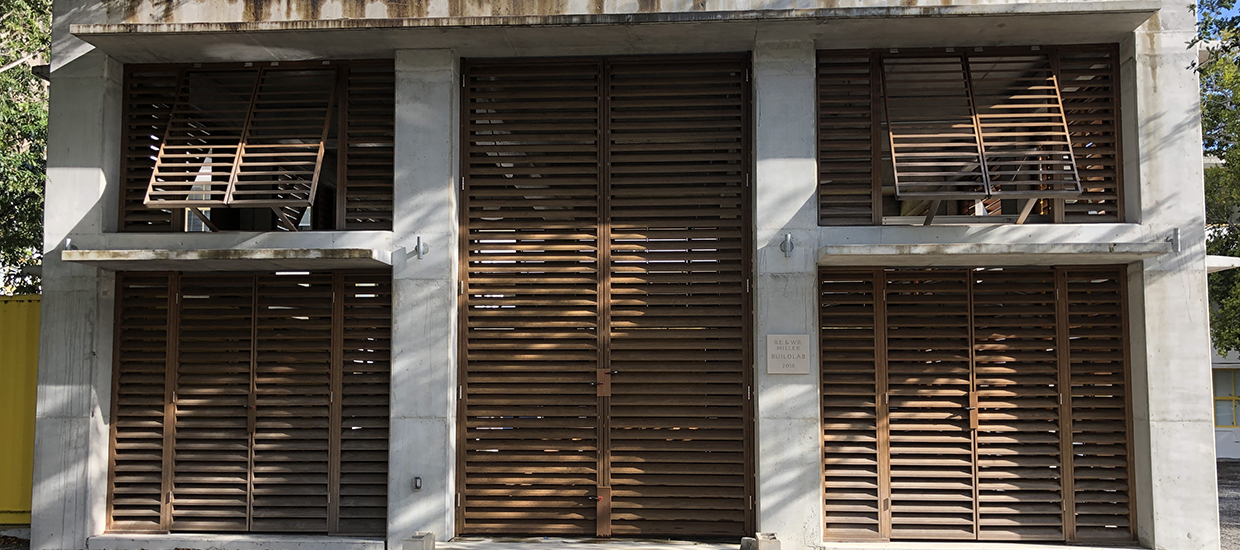While the scope of this work went well beyond the one day a week schedule of a typical seminar, we hoped at the very least to complete the large entry doors, and build enough of the other work to establish the method so we could finish the work at a later date.
The entry doors required two, sixteen foot high by 4’-8” diagonally braced, out-swinging, louvered doors to match the adjacent bays of the same material and spacing. While the threaded rods and hardware were mostly off-the-shelf, a great deal of time went into the design and making of the aluminum plates to resolve the attachment of the threaded rods. These doors would ultimately become the access doors for trucks to enter, to load our projects for transport to the site. They are at once, functional, monumental and a very overt expression of what can be done in Design/Build.
Equal in the amount of work, though smaller in scale, was making and installing the Kebony trim for the louvered openings and creating the interiors of the containers. For the trim, a great deal of craft and skill was involved in scribing the boards to meet the irregular surfaces of the concrete openings. For the interiors, a unique framing system was devised to protect the integrity of the exterior shell by attachment only to the floor and the top of the container’s interior structural frame. The interior surfaces of the walls were made from a large pile of salvaged concrete formwork boards of Western Red Cedar (WRC). The unequal lengths and widths of these boards meant they needed to be separated according to size and quality, with twisted boards, or boards with excessive knots, culled from the pile. The boards were then scraped and cleaned with a wire brush to remove concrete, and eventually ripped to a uniform dimension. The wall’s rough and varied texture is in strong contrast to the container’s exterior, along with the ¾” birch veneer plywood cabinets made for tool storage and support.
The work of the semester was as intense as any other and the final building is an expression of its function, having in its fabric, the thoughtful design and crafted construction of those who toiled there. Anyone who approaches the large doors, is first struck by their tremendous scale and craft and after a few moments, moves up to the louvers -- to try to get a peek at what goes on inside.
Client: University of Miami, School of Architecture
Students: Baraa Ageel, Abdul Allam, Mohammad Alsaeed, Isabel Alvarez, Juliana Char Garcia, Frances Gelbart, A.J. Guillen, Andrea Hernandez, Juan Ochoa-Echeverry, Mario Ostolaza, Xiangyu (Jack) Shao, Maria Angela Villada, Wei Wang, Junyong Wu, Bo Xuan
Faculty: Jim Adamson, Rocco Ceo
Teaching Assistants: Wei Wang, Bo Xuan



